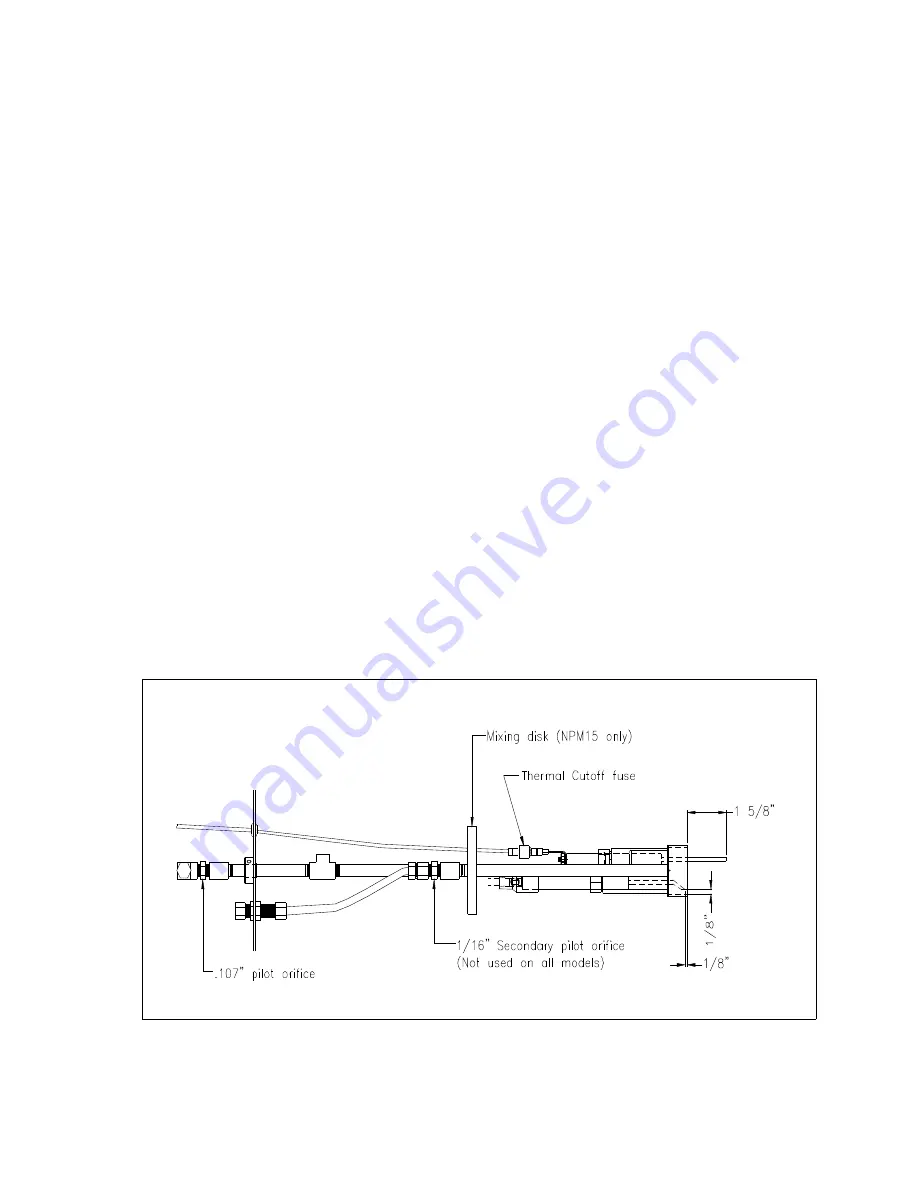
6
7.8
Connect a microampmeter or voltmeter to the Primary Safety Control as directed in the PSC
manufacturer’s instruction bulletin to determine flame detection system values. The meter is normally
connected in series with the (SENSE) terminal on the S8680 series control.
7.9
With the main and leak test cocks and pilot cock in
OFF
position, turn on the gas cock at meter. Check to
make certain that the pressure upstream of main and pilot cocks does not exceed 14” W.C. (1/2 PSIG) –
unless special valve train components suitably rated have been furnished (Refer to Burner Specification
Sheet). If pressure is acceptable, proceed to next step.
7.10
Pilot Ignition
Next check the operation of the gas pilot system. This is a very important part of the start up
procedure.
A.
Before attempting burner start up make certain that you are familiar with the operation of the
Primary Safety Control and other components being used on this specific application. Refer to
Fig. 5 and 5A for pilot spark gap dimensions.
B.
To prepare the pilot for proper operation, it is essential that appropriate adjustments be made on
the burner air inlet damper and to the pilot gas pressure. Initial air damper opening should be
approximately 1/8 inch open for low high low or modulating type models. On fixed rate burners
the air damper may have been factory set to a predetermined opening. The pilot pressure
needed will be affected by the damper position. Typical pilot pressure is 0.5” W.C. higher than
the static air pressure measured on the pilot during pre-purge for natural and propane gas.
C.
In many instances, pilot problems relate to gas pressures that are too high or too low,
causing the pilot gas mixture to be just outside of the ignition range. The optimum pilot
pressure should be determined by adjusting the pilot regulator and finding the minimum
and maximum pressure that the pilot lights. Then, set the pilot regulator where the
pressure is in the middle of these two pressures.
Figure 5. Pilot Assembly – Flame Rod Type – Natural Gas/LP Gas - NPM15 – 24 Volt































